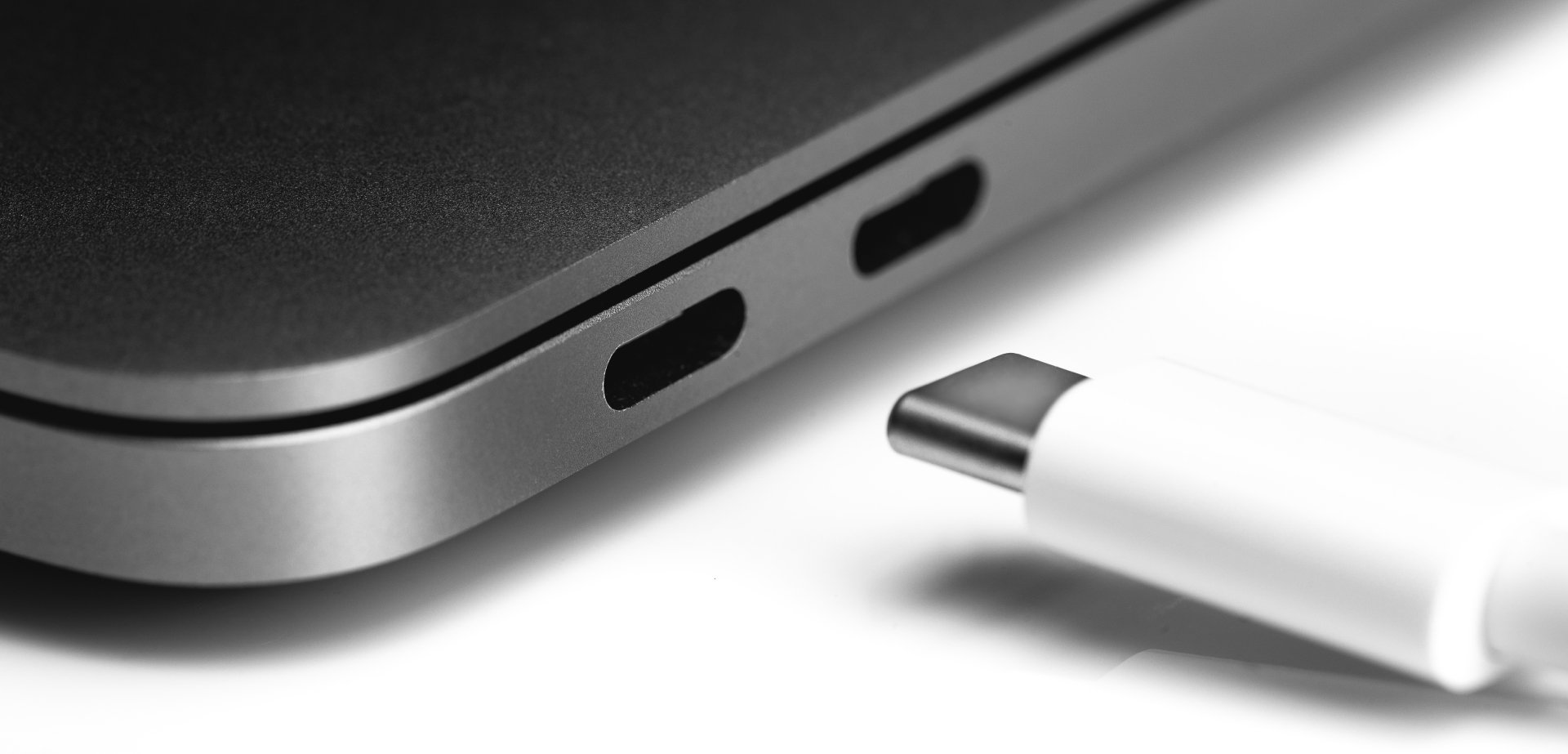

In a technology forward world where nearly everyone relies on devices, USB ports have become essential. We all know what they look like, but do we really understand the ins and outs of these connectors? There are multiple iterations of USB ports, but the latest is USB-C and it’s become universal. It’s time to delve into the details of USB-C and break it all down.
Index
USB-C: The Universal Connector
The USB standard was first introduced in 1996, with USB-B and Micro USB connectors coming out later for different adaptability options on devices. However, they fell short of being truly universal because they required a specific orientation to plug in. USB-C changed this by introducing its symmetrical design, meaning it can be connected either way, making it universal and user-friendly. It has quickly replaced USB ports, being included with almost every device available, including all Apple devices now.
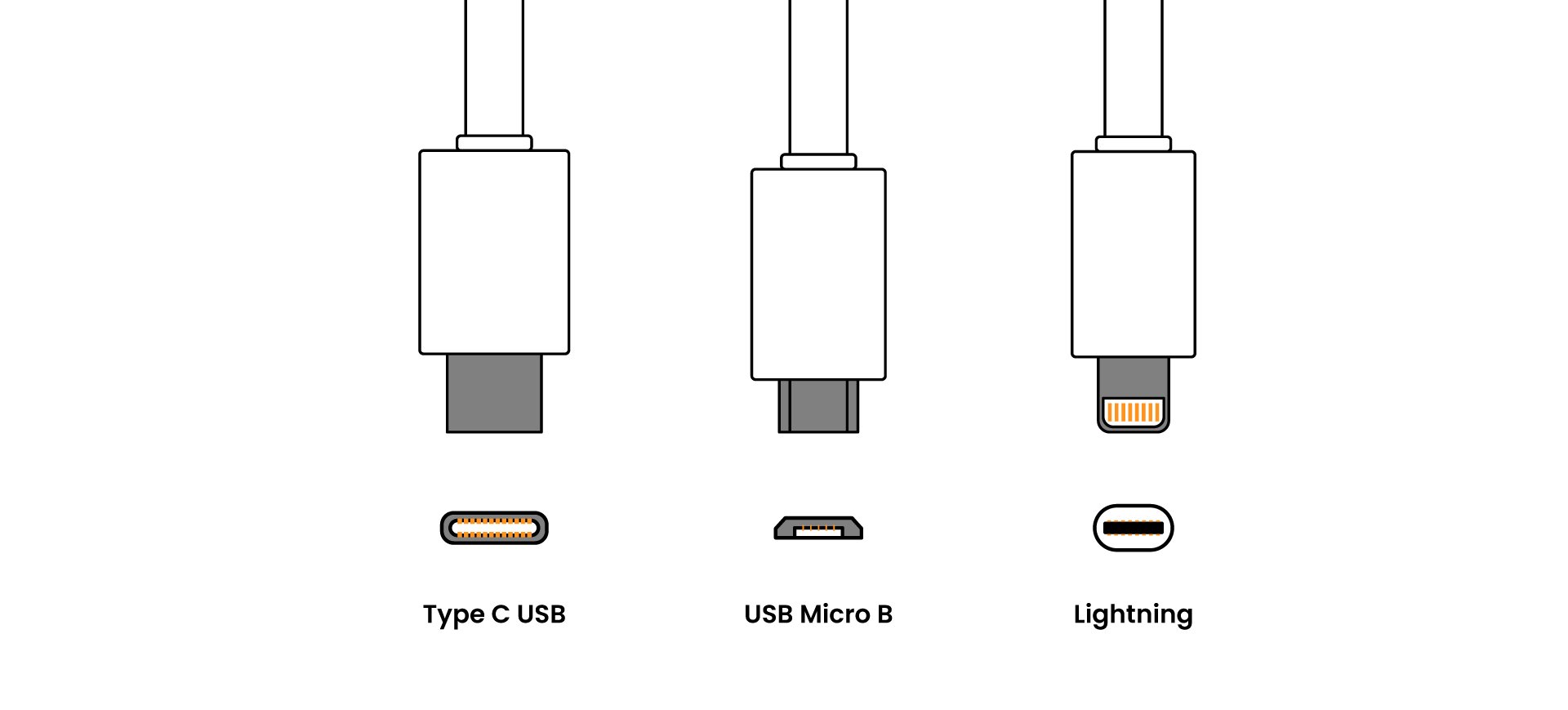

Simple distinctions in the physical appearance of USB-C, Micro USB, and Lightning
USB-C Versions and Specs
The USB-C connector may look the same, but it has distinguished versions with diverse capabilities. The different versions are USB 3.1, USB 3.2, and the latest, USB 4. These versions differ in data transfer speeds and power output. The newer versions, specifically USB 4, offer faster data transfers and more power, promising broader device compatibility.
Let's review the specifics of each USB-C version.
Data Transfer Speeds for USB-C
USB's goal has always been high-speed data transfer. USB-C has the fastest data transfer speed so far, with USB 4 supporting speeds of up to 40Gb/s. Here's a table to help you understand the data transfer speeds of each USB version:
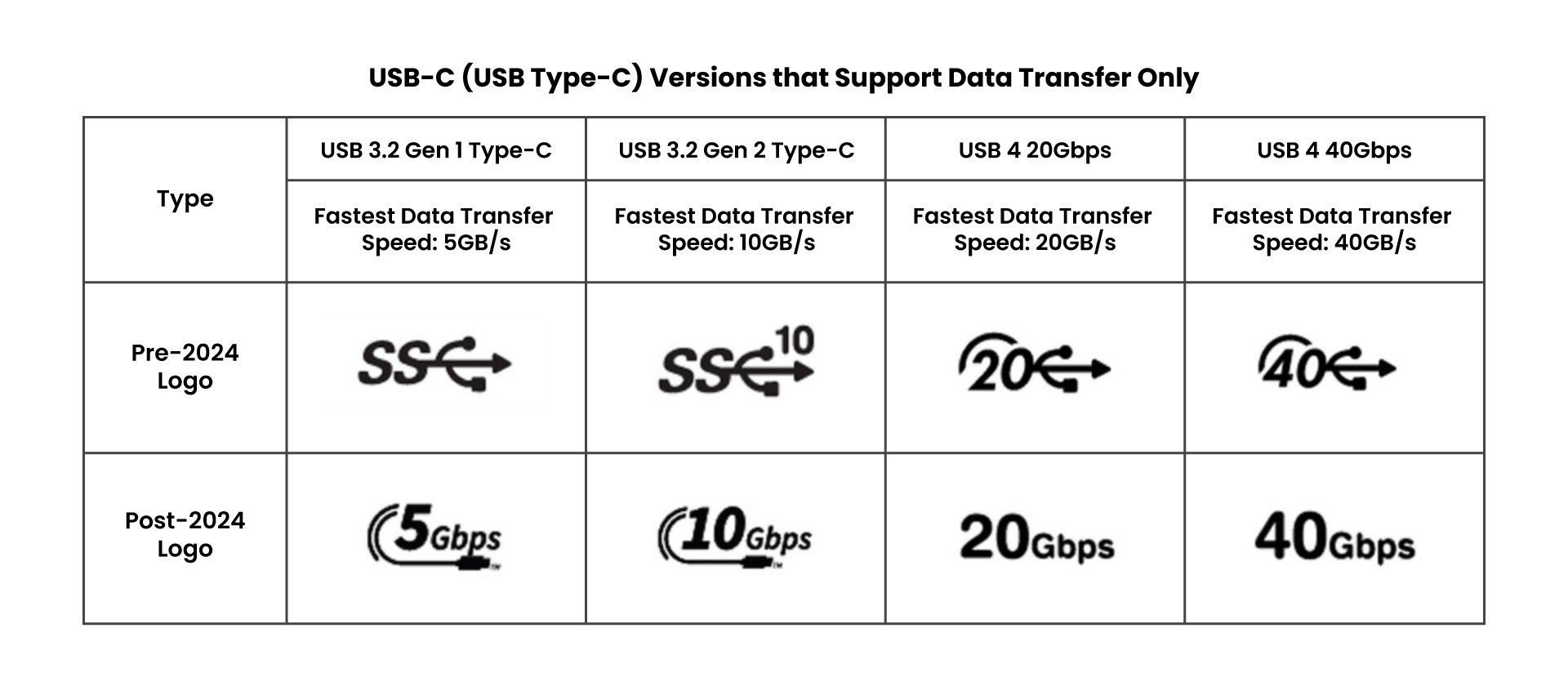

Distinguishing USB-C (USB Type-C) versions that support data transfer only from the logo
Power Delivery for USB-C
USB ports don’t just transfer data, they also deliver power. With USB-C and Power Delivery (PD), you can send and receive power through a supported cable. This means fewer cables cluttering your space and more devices powered solely through USB-C. Products with PD support are marked with a lightning icon:
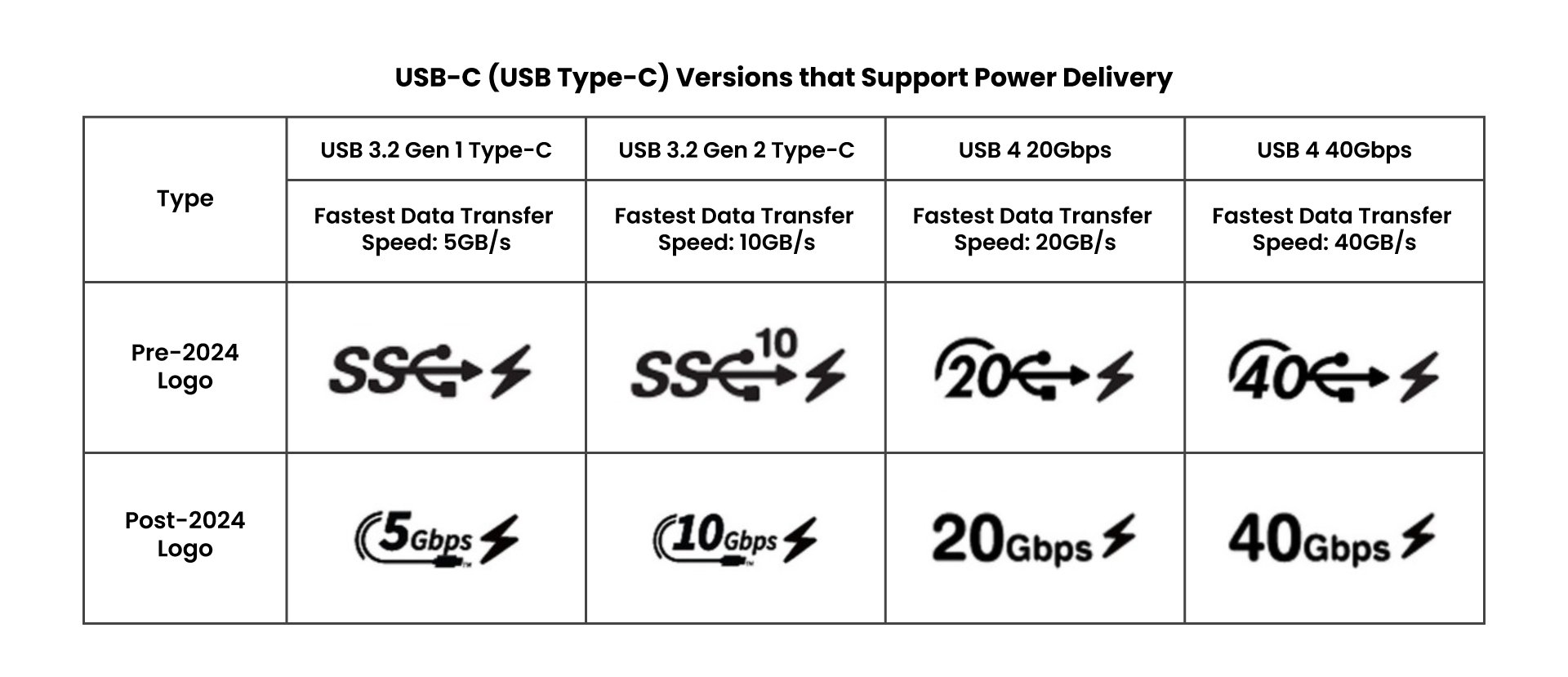

Distinguishing USB-C (USB Type-C) versions that support Power Delivery (PD) from the logo
DisplayPort for USB-C
USB-C can also transmit audio and video through DisplayPort Alternative Mode (DP Alt Mode). Devices with this feature let you connect to displays, projectors, and other devices for high-quality video. Look for the "D" or "DP" icon next to the USB logo to identify this feature:
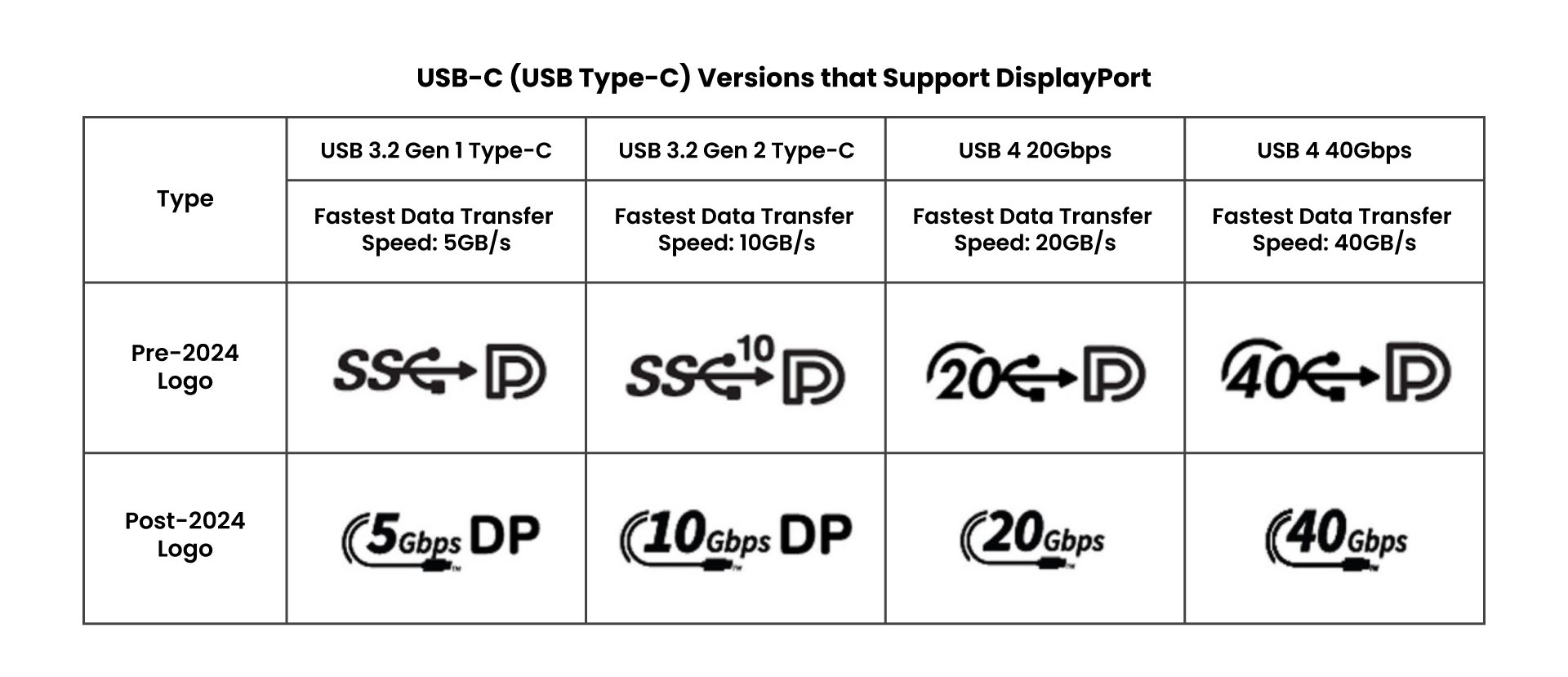

Distinguishing USB-C (USB Type-C) versions that support DisplayPort Alternative Mode (DP Alt Mode) from the logo
Full-Featured USB-C
USB-C can do it all – from Thunderbolt 3 to 4. If you want a one-size-fits-all solution, look for these logos to identify products with comprehensive USB-C ports:
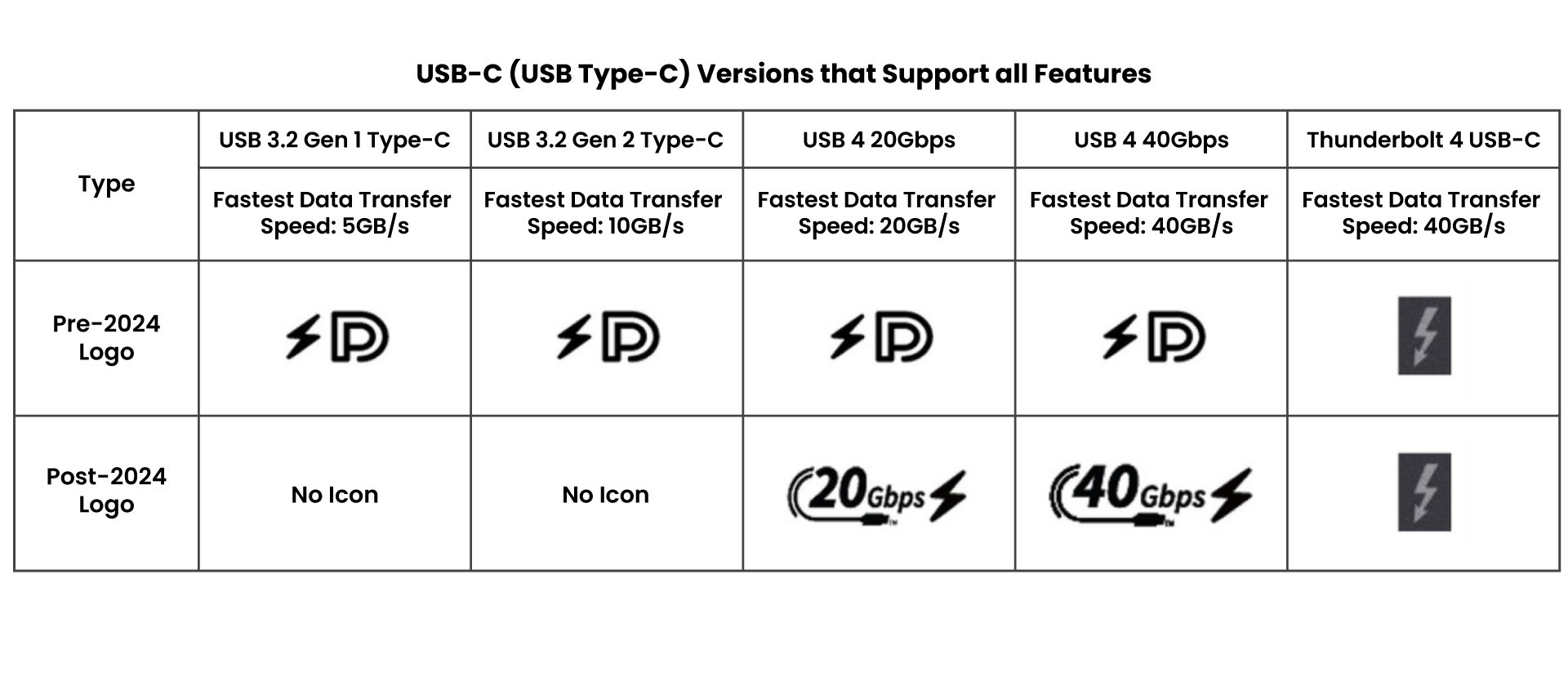

Distinguishing USB-C (USB Type-C) versions from the logo to find the full-featured USB-C
Additional Tips for USB-C Users
Understanding USB-C's potential is crucial, but there are a few more things to consider:
1. Cable Compatibility: Not all USB-C cables are created equal. Ensure you have the right cable to utilize all the benefits of USB-C. The wrong cable could hamper data speed transfer and other features.
2. Cable Quality: Low-quality cables can lead to unreliable connections and safety hazards. Stick to reputable brands with official certifications and warranties to avoid problems.
3. Physical Considerations: Factors such as cable length and ensuring a proper connection can impact your experience. Longer cables may result in signal loss.
When selecting USB-C cables online, here are the key factors to pay attention to:
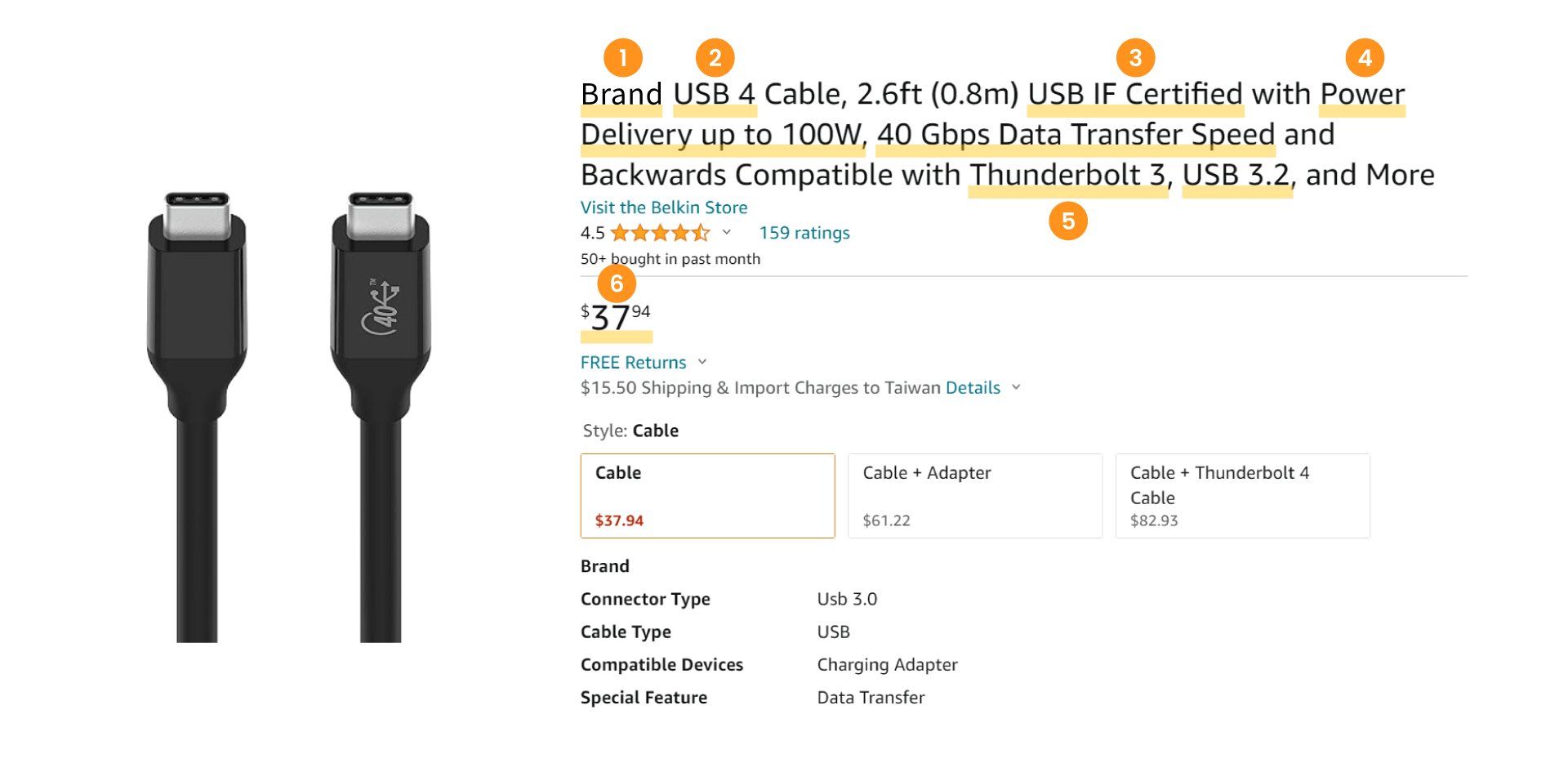

In the era of USB-C, understanding the basics and choosing the right connector can make your tech life smoother and more efficient. Happy connecting!